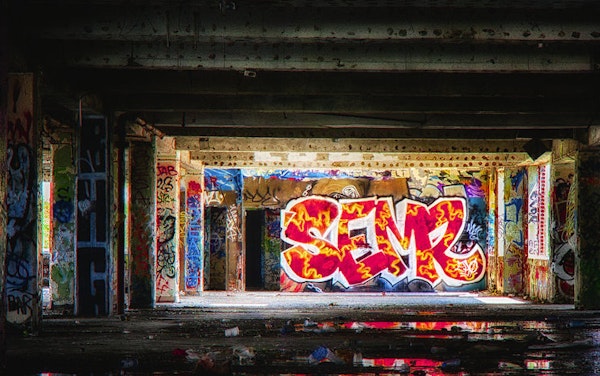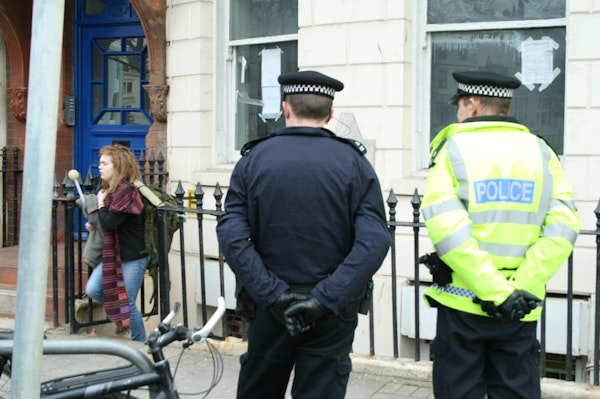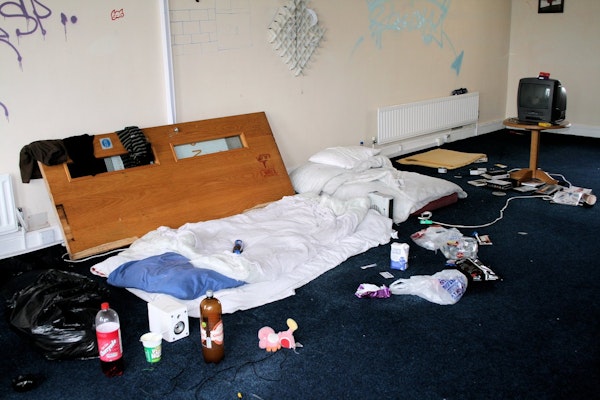- Fully qualified & insured teams
- Free site assessments
- Rapid response
- Rated Excellent
Squatters Rights and Adverse Possession
If you have a vacant property, one of your major concerns will be the threat of squatters. In this three part series, SafeSite Security Solutions consider the most frequently asked questions about squatters, how to prevent them and how to remove them, starting with that concern every owner of an empty property has: what exactly are squatters’ rights and what are your own rights, as the owner of an empty property?
Read the following two posts by following these links:
Definitions of squatters
A squatter is a person who occupies a building or land, which they neither own nor rent, without the owner’s permission. Additionally, a squatter is also defined as someone who has trespassed in order to gain occupation.
In this way, according to the legislative definition of squatters and squatting, tenants or subtenants of a residential property, who fall behind with the rent or do not leave the property at the end of their tenancy, are not squatters because they originally had the permission of the landlord to be in the building.
What are squatters’ rights?
The rights squatters have changed to some extent in September 2012, when trespass with the intent of occupation of residential properties in England and Wales became a criminal offence under section 144 of the Legal Aid, Punishment and Sentencing of Offenders Act (LAPSO).
Previously, all cases of squatting – in residential or non-residential property – had to be dealt with as a civil matter in the court. Currently, the civil court process applies to squatting in non-residential properties and to defaulting residential tenants who continue unwanted occupation of a building after the end of their tenancy. It’s now the criminal court process which applies to squatting in residential properties.
The actual term “squatter’s rights” emerged in the late 1970s, after laws were introduced in the Criminal Law Act of 1977, Section 6, to protect tenants from rogue landlords intent on forcible eviction. These laws, relating to rights of access, rendered it illegal to use violence or threats to gain access to a property when someone is present who opposes entry.
As such, squatters in unauthorised occupation began to invoke these rights by posting legal warnings on the doors or windows of properties they were occupying, to demonstrate that it would be an offence to force entry into properties they were occupying. However, fast forward to the 21st century and the new legislation of 2012 and this Squatters’ Rights Legal Warning no longer applies to residential properties – so squatters occupying a residential property do not have the right to invoke it and the police can force entry.
What rights do property owners have?
Since squatting in residential properties (including temporary residences, such as mobile homes, holiday homes and caravans) became a criminal offence, it has become quicker, easier and less costly for property owners (including housing associations, councils, private landlords and homeowners) to exercise their rights as owners and have squatters evicted.
Whilst property owners have no right to use threats or force against the squatters, they have the right to request criminal proceedings if they can prove that the occupation is illegal, for example by demonstrating that:
- The squatter does not have, and has never had, permission to occupy the property.
- Entry was gained through trespass (another criminal offence).
Where illegal squatting in a property is actually rendering the property owner homeless, the owner has the legal right to access via the door and demand that the trespassers depart. If the squatters refuse, the owner then immediately has recourse through the law and should report the matter to the police, who have the designated authority to enforce the law.
Owner’s rights are additionally supported through the legal system as the police also have the power to raid properties and remove squatters. The Ministry of Justice guidance regarding The Offence of Squatting in a Residential Building states that the police have lawful authority under section 17 of PACE (Police and Criminal Evidence Act) to enter the property. With squatting in a residential property now a crime, offenders can be arrested and the course of the law followed. Successful prosecutions result in any possible combination of up to 6 months imprisonment and fines of up to £5,000.
The legal support of property owners rights also includes legal action in the event of related offences by the squatters, such as:
- Criminal damage, particularly breaking and entering.
- Criminal damage through vandalism.
- Theft – including stealing fixtures and fittings or theft of utilities.
- Fly-tipping and rubbish dumping.
- Noise or other anti-social behaviour.
In Scotland, squatting has been illegal for almost 200 years and property owners retain all rights to evict squatters without recourse to the law or serving notice.
What is adverse possession?
Adverse possession is a claim of ownership of a property, on the basis of occupation for a given period in excess of ten years, and one often used by squatters to claim ownership of a property.
To claim adverse possession, a squatter needs to submit a legal application and be able to demonstrate:
- Continual occupation for 10 years if the property is registered with the land registry, or 12 years if not. The continual occupation can include predecessors, so a relatively recent squatter may still be able to claim adverse possession if it can be proved that the property has been occupied by a succession of squatters over the previous years.
- Proof of acting as the owners of the property. This includes being able to offer evidence of good maintenance, responsible behaviour and payment of utilities etc.
- Proof of not having had permission in the past – for example the property was not originally rented to someone who then later began the succession of squatters.
Once an application for adverse possession has been submitted, property owners have 65 days to object, otherwise they may be at serious risk of losing their title to the property.
Ways to reduce the risk of adverse possession include ensuring that land title can be proved to your ownership (land registry) and, if unoccupied, that the property is fully secured. In the event of identifying trespassers or squatters, alerting the police immediately also offers evidence that the occupation is unauthorised.
For additional information, the UK Gov website offers useful dedicated information about adverse possession processes and protection.
Are there any differences for non-residential properties?


2012’s legislation applies to residential buildings only, which is why squatting in non-residential property is not a legal, but civil matter. As such, there are significant differences in the rights of both parties – owners and squatters – if the property in question has commercial or business use, ie: was not designed to be lived in. In such a case, squatters’ rights, as outlined previously, can still be claimed.
Whilst removing squatters legally is to be discussed in part 2 of this series, it’s worth remembering at this stage that the surest way to prevent squatters in your empty property – residential or non-residential – is by securing the property effectively. Installing steel security screens and steel security doors to access and entry points offers a quick and effective security solution which not only act as a visual deterrent but also offer evidence in cases of attempted trespass, as these can only be professionally removed.
Contact security experts SafeSite Security Solutions for free quotes and advice on residential and commercial property security.
Request a free no-obligation quote
We respond in under 30 mins on average (excl. weekends)

